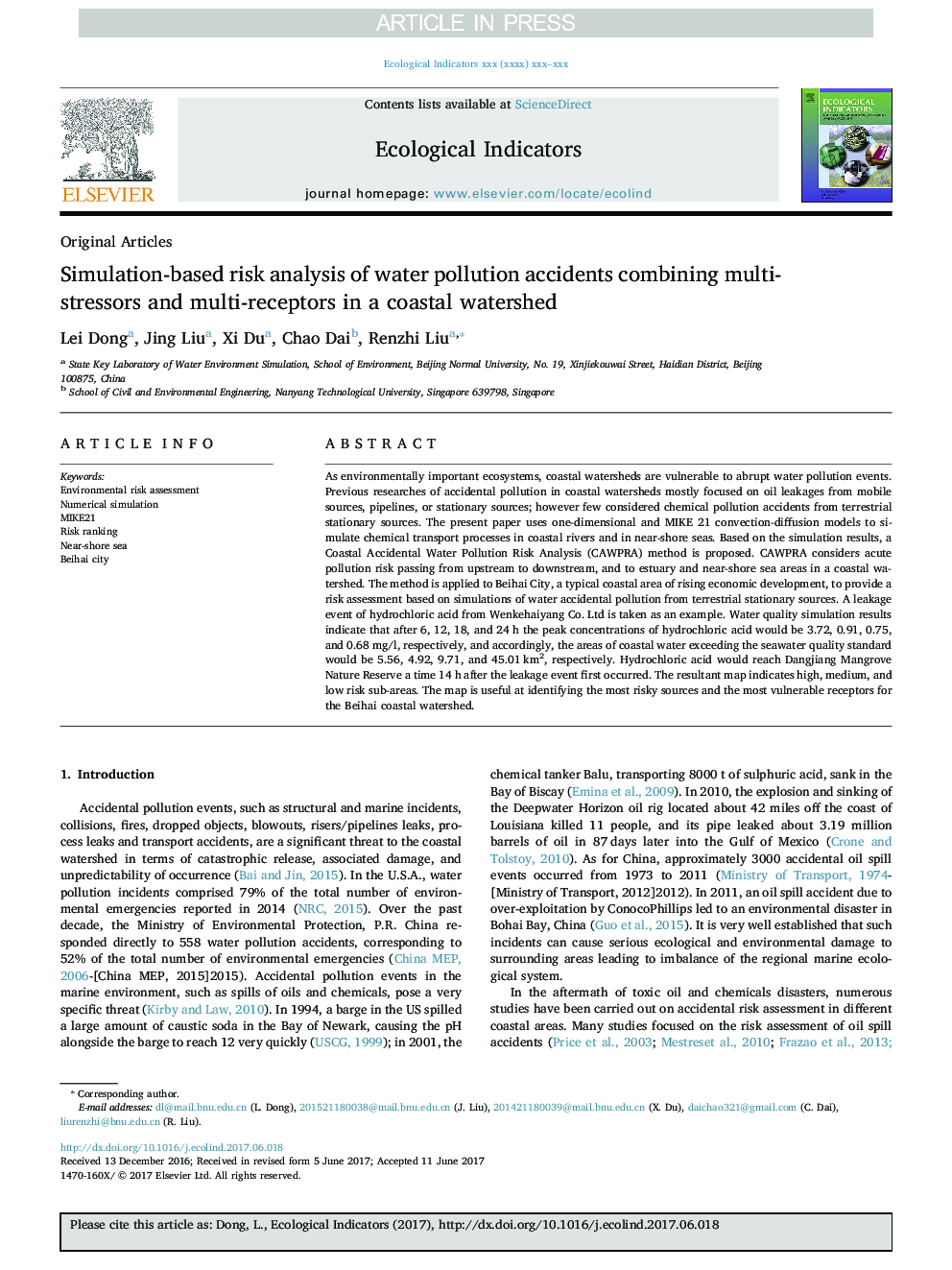| Article ID | Journal | Published Year | Pages | File Type |
|---|---|---|---|---|
| 8845233 | Ecological Indicators | 2018 | 10 Pages |
Abstract
As environmentally important ecosystems, coastal watersheds are vulnerable to abrupt water pollution events. Previous researches of accidental pollution in coastal watersheds mostly focused on oil leakages from mobile sources, pipelines, or stationary sources; however few considered chemical pollution accidents from terrestrial stationary sources. The present paper uses one-dimensional and MIKE 21 convection-diffusion models to simulate chemical transport processes in coastal rivers and in near-shore seas. Based on the simulation results, a Coastal Accidental Water Pollution Risk Analysis (CAWPRA) method is proposed. CAWPRA considers acute pollution risk passing from upstream to downstream, and to estuary and near-shore sea areas in a coastal watershed. The method is applied to Beihai City, a typical coastal area of rising economic development, to provide a risk assessment based on simulations of water accidental pollution from terrestrial stationary sources. A leakage event of hydrochloric acid from Wenkehaiyang Co. Ltd is taken as an example. Water quality simulation results indicate that after 6, 12, 18, and 24Â h the peak concentrations of hydrochloric acid would be 3.72, 0.91, 0.75, and 0.68Â mg/l, respectively, and accordingly, the areas of coastal water exceeding the seawater quality standard would be 5.56, 4.92, 9.71, and 45.01Â km2, respectively. Hydrochloric acid would reach Dangjiang Mangrove Nature Reserve a time 14Â h after the leakage event first occurred. The resultant map indicates high, medium, and low risk sub-areas. The map is useful at identifying the most risky sources and the most vulnerable receptors for the Beihai coastal watershed.
Related Topics
Life Sciences
Agricultural and Biological Sciences
Ecology, Evolution, Behavior and Systematics
Authors
Lei Dong, Jing Liu, Xi Du, Chao Dai, Renzhi Liu,
